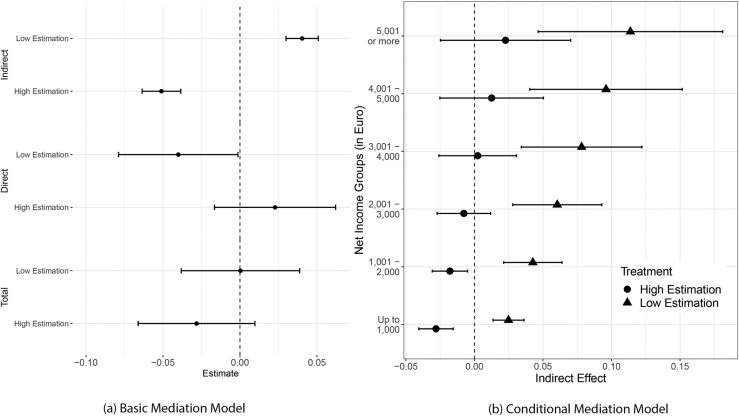Social Networks and Redistributive Policies
How do people around us shape our views of redistribution? In a national survey experiment in Germany, Christian Breunig, Wolfgang Gaissmaier, and I find that a high-income social circle makes people less likely to support redistribution whereas a low income circle increases such a support. The paper is published in the Journal of Experimental Social Psychology and may be accessed here.
Let’s start with an important concept: social sampling.
The world is a messy place. We meet different kind of people with different values, expectations, and thoughts about what’s good or what’s bad. We are constantly bombarded with information. We want to fully understand the world, but it is just impossible to do so because our brains are just incapable to process all this information.
When it comes to redistributive policies or how much the government and society should help the poor, for instance, we might face conflicting considerations or information about the effects of such policies. We might also have only a vague understanding of how many poor people there are and what kind of help they need.
To deal with this complex world we look at our social circles and infer that the world must be, at least to some extent, like them. A person surrounded by rich people would think the society is richer than it actually is.
Our study employed an experimental design to manipulate which contacts became salient by asking respondents to think about and list first names of certain contacts.
Control group: any contacts.
High-Estimation group: contacts with high education.
Low-Estimation group: contacts with low education.
We then asked respondents to estimate the income distribution of their contacts. The High Estimation group gave the highest income estimation and the Low Estimation group gave the lowest estimation, suggesting that the treatment successfully made salient the intended types of contacts.

We model a direct effect from the treatment to preference for redistribution as well as an indirect effect via social contacts’ mean income. We also ran a conditional mediation model to see how the respondent’s own income moderates the indirect effect. Figure 2 below visualizes our estimated models.


The results are presented as Figure 3 below. There are two keys takeaways. First, the treatment indirectly shapes redistributive preferences by first making the respondents to think that their contacts are rich or poor. Second, the effect of the Low Estimation group is stronger among richer respondents whereas the effect of the High Estimation group is stronger among poorer respondents.
The second takeaway is particularly noteworthy. It suggests that the treatments prompt respondents to remember contacts whom they otherwise unlikely to think about. Asking people to recall low income friends makes them more supportive of redistribution, especially among richer people who likely don’t have many of such friends.

Circling back to the original question: How do people around us shape our views of redistribution?
Our study shows that they do so in part by influencing our perceptions of the world. When our social circles are dominated by people with high incomes, we become more likely to think that the population in general is richer than it actually is. This, in turn, decreases our support for redistribution. Because we think the population is already better of, we no longer think that redistributive policies are necessary.
Yet, our study also shows that the salience of social contacts is variable and malleable, not fixed. We manipulated this through a priming approach. On a broader scale, interventions aimed at making salient “known, but forgotten” contacts may go a long way in shaping attitudes toward redistributive policies and other policies in general.
